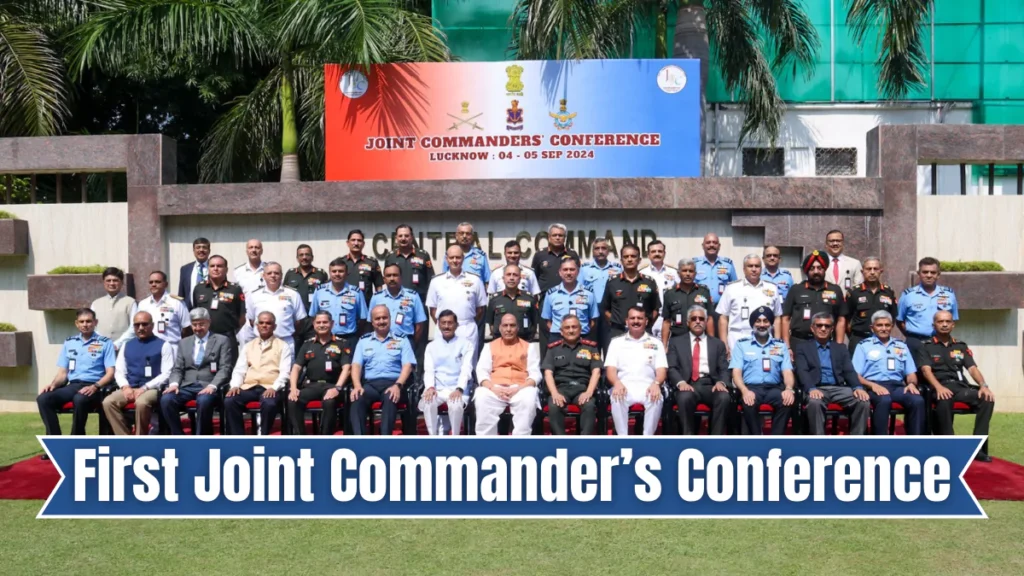
The first-ever Joint Commander’s Conference of the Indian Armed Forces was held on September 4-5, 2024, in Lucknow, Uttar Pradesh. This historic event marked a new chapter in the coordination and integration of India’s military. Organized by the Ministry of Defence, the conference was aimed at discussing important defense matters and planning for the future.
Key Details of the Conference
The event was attended by key leaders from India’s defense sector, including:
- General Anil Chauhan, Chief of Defence Staff
- General Upendra Dwivedi, Chief of the Army Staff
- Admiral Dinesh Kumar Tripathi, Chief of the Naval Staff
- Air Chief Marshal Vivek Ram Chaudhari, Chief of the Air Staff
- Giridhar Aramane, Defence Secretary
Theme: Strong and Secure India
The theme of the conference was “Sashakt aur Surakshit Bharat: Transforming Armed Forces”. It highlighted the government’s commitment to making India’s military stronger and more secure. The focus was on modernizing the armed forces and improving their ability to face challenges.
Background and Reasons
The need for better coordination among India’s Army, Navy, and Air Force has been discussed for many years. The Shekatkar Committee in 2015 suggested setting up integrated commands for better cooperation between the three branches of the military. Currently, India has only two integrated commands – Andaman and Nicobar Command and Strategic Forces Command, which manages nuclear weapons.
The growing security challenges, both internally and from neighboring countries, require India to have a well-coordinated and modern military. The conference aimed to address these concerns by working towards a more integrated and efficient defense structure.
Key Focus Areas of the Conference
1. Future Challenges and Capabilities
The conference discussed the future security challenges that India might face. Military leaders worked on strategies to improve the armed forces’ capabilities to handle these issues effectively.
2. Integrated Theatre Command
One of the major topics was the Integrated Theatre Command structure. This idea aims to combine the operations of the Army, Navy, and Air Force under one command. It will help in better coordination and faster decision-making during conflicts.
3. Indigenous Technological Development
The conference also focused on developing indigenous defense technology. The government wants to reduce dependence on foreign weapons and push for more Made in India military equipment. Discussions included advancements in robotics and artificial intelligence (AI) for future defense needs.
Global Impact
The integration of the Indian armed forces and the push for indigenous defense technology can strengthen India’s position globally. As India modernizes its military, it will have a stronger role in international security matters. This could make India a key player in regional and global peacekeeping efforts.
Aims and Motivations
The main aim of the conference was to strengthen the coordination between different branches of the military and prepare them for future challenges. By focusing on modern technology and indigenous manufacturing, India aims to become more self-reliant in defense. The Integrated Theatre Command system will help improve efficiency and ensure that the military is prepared for any situation.
The main purpose was to improve coordination between India’s Army, Navy, and Air Force and to discuss future challenges and technological advancements.
The Integrated Theatre Command is a system where the Army, Navy, and Air Force work under one command for better coordination during conflicts.
Indigenous defense technology helps India become more self-reliant and reduces dependence on foreign weapons.
The conference focused on future challenges, the need for an Integrated Theatre Command, and promoting indigenous technology in defense.
By modernizing its military and improving coordination, India will strengthen its position in international security and peacekeeping efforts.
